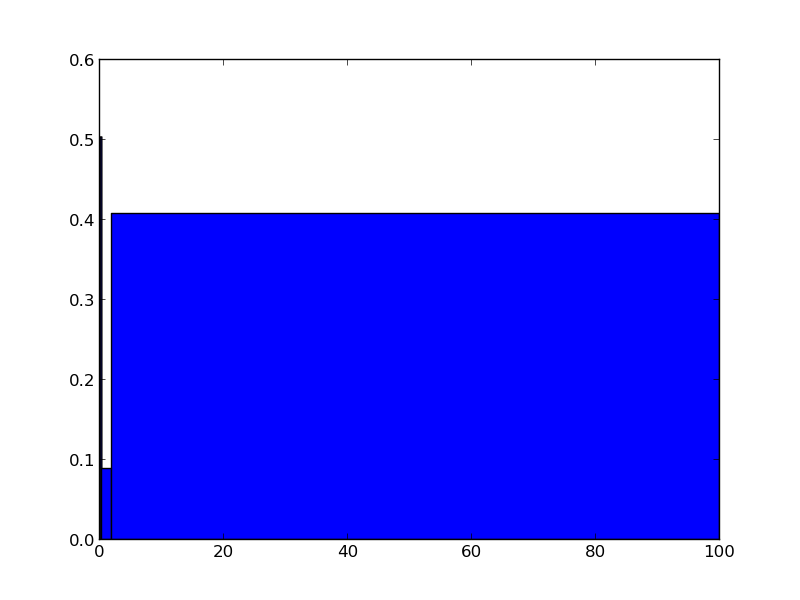To generate this plot, I did:
bins = np.array([0.03, 0.3, 2, 100])
plt.hist(m, bins = bins, weights=np.zeros_like(m) + 1. / m.size)
However, as you noticed, I want to plot the histogram of the relative frequency of each data point with only 3 bins that have different sizes:
bin1 = 0.03 -> 0.3
bin2 = 0.3 -> 2
bin3 = 2 -> 100
The histogram looks ugly since the size of the last bin is extremely large relative to the other bins. How can I fix the histogram? I want to change the width of the bins but I do not want to change the range of each bin.



bar graph. – Calicesnp.histogram, so the implementation should be straight forward. – Marcenemarcescent